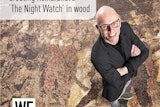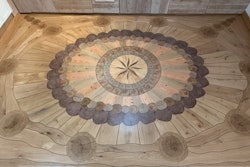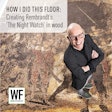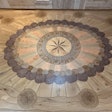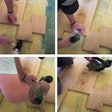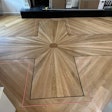
 Light speeds up the process of wood darkening in color—a change that would happen eventually with or without light. Here you can see a Brazilian cherry floor that shows where an area rug was, and the same floor after sanding. (Photos courtesy of Dawson Hardwood Floors)
Light speeds up the process of wood darkening in color—a change that would happen eventually with or without light. Here you can see a Brazilian cherry floor that shows where an area rug was, and the same floor after sanding. (Photos courtesy of Dawson Hardwood Floors)
I've heard people argue about whether it's light or oxidation that changes the color of wood. Which one is it?
Dr. Alex C. Wiedenhoeft, research botanist and team leader at the Center for Wood Anatomy Research at the U.S. Forest Products Laboratory in Madison, Wis., answers:
The short answer is that color change—in general, not just in wood—is chemical change. Woods like cherry and mahogany that richen and deepen in color with time and exposure to light will change much more quickly in direct sun than in the dark or under indoor lighting. Because light speeds the reaction so much, most people think that light is the only factor, but it is not strictly required—the interior of a cherry board will eventually end up the same rich brown as the surface, despite never seeing a single photon, though the process may take decades if the wood is kept in the dark. Most conventional wisdom calls this color change in wood "oxidation," but that is often the same conventional wisdom that calls all extractives in wood "tannins." Because we see the compelling color change in heartwood and not in the sapwood, we can infer it is the extractives that are changing, not the wood substance itself. I don't know if we have evidence that the prevention of exposure to oxygen stops color change, but we do know that for some woods, light, and especially sunlight, greatly speeds it. Some woods lighten in color—a phenomenon we'll cover in a future issue.
RELATED: Avoid Common Callbacks with Imported Species









